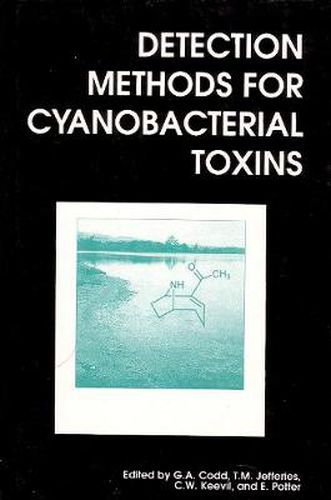Readings Newsletter
Become a Readings Member to make your shopping experience even easier.
Sign in or sign up for free!
You’re not far away from qualifying for FREE standard shipping within Australia
You’ve qualified for FREE standard shipping within Australia
The cart is loading…






Cyanobacteria, or blue-green algae, commonly occur in a variety of water types throughout the world. A variable, but, high proportion of the cyanobacterial blooms and scums, which can develop annually in lakes, reservoirs, canals and slow-flowing rivers, contain potent toxins. Although animal poisonings and human health problems associated with the ingestion of, or contact with, cyanobacterial scums have long been recognized, a developing understanding of the health hazards posed by the toxins requires that reliable, sensitive, specific and convenient methods are available for their detection and quantification.
Detection methods for cynobacterial toxins looks at the application of biological, toxicological, biochemical and physicochemical techniques in studies of cyanobacterial toxins and at experimental methods that have identified at least 50 cyanobacterial compounds toxic to vertebrates.
Academics, public health bodies, environmental protection agencies and water companies are all involved in monitoring cyanobacterial levels and effects, and this book will help to ensure that their research is not duplicated, is standardized and comparable, and that optimal progress can be made in an important area that is still in its developing stages.
$9.00 standard shipping within Australia
FREE standard shipping within Australia for orders over $100.00
Express & International shipping calculated at checkout
Cyanobacteria, or blue-green algae, commonly occur in a variety of water types throughout the world. A variable, but, high proportion of the cyanobacterial blooms and scums, which can develop annually in lakes, reservoirs, canals and slow-flowing rivers, contain potent toxins. Although animal poisonings and human health problems associated with the ingestion of, or contact with, cyanobacterial scums have long been recognized, a developing understanding of the health hazards posed by the toxins requires that reliable, sensitive, specific and convenient methods are available for their detection and quantification.
Detection methods for cynobacterial toxins looks at the application of biological, toxicological, biochemical and physicochemical techniques in studies of cyanobacterial toxins and at experimental methods that have identified at least 50 cyanobacterial compounds toxic to vertebrates.
Academics, public health bodies, environmental protection agencies and water companies are all involved in monitoring cyanobacterial levels and effects, and this book will help to ensure that their research is not duplicated, is standardized and comparable, and that optimal progress can be made in an important area that is still in its developing stages.